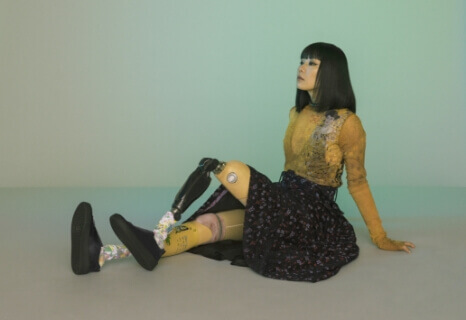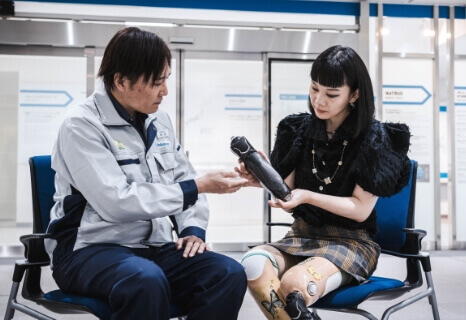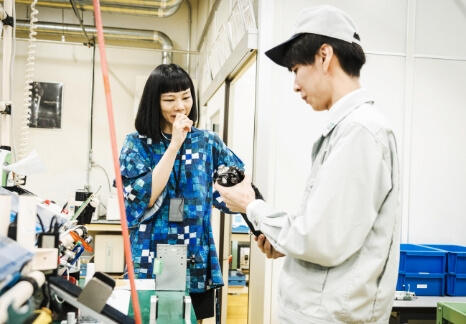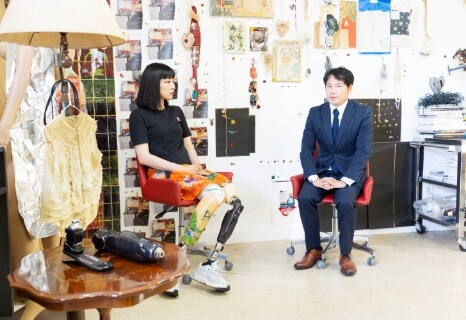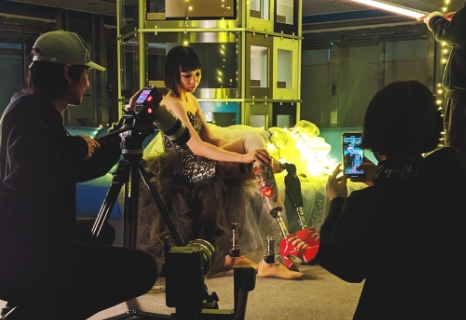

SCROLL
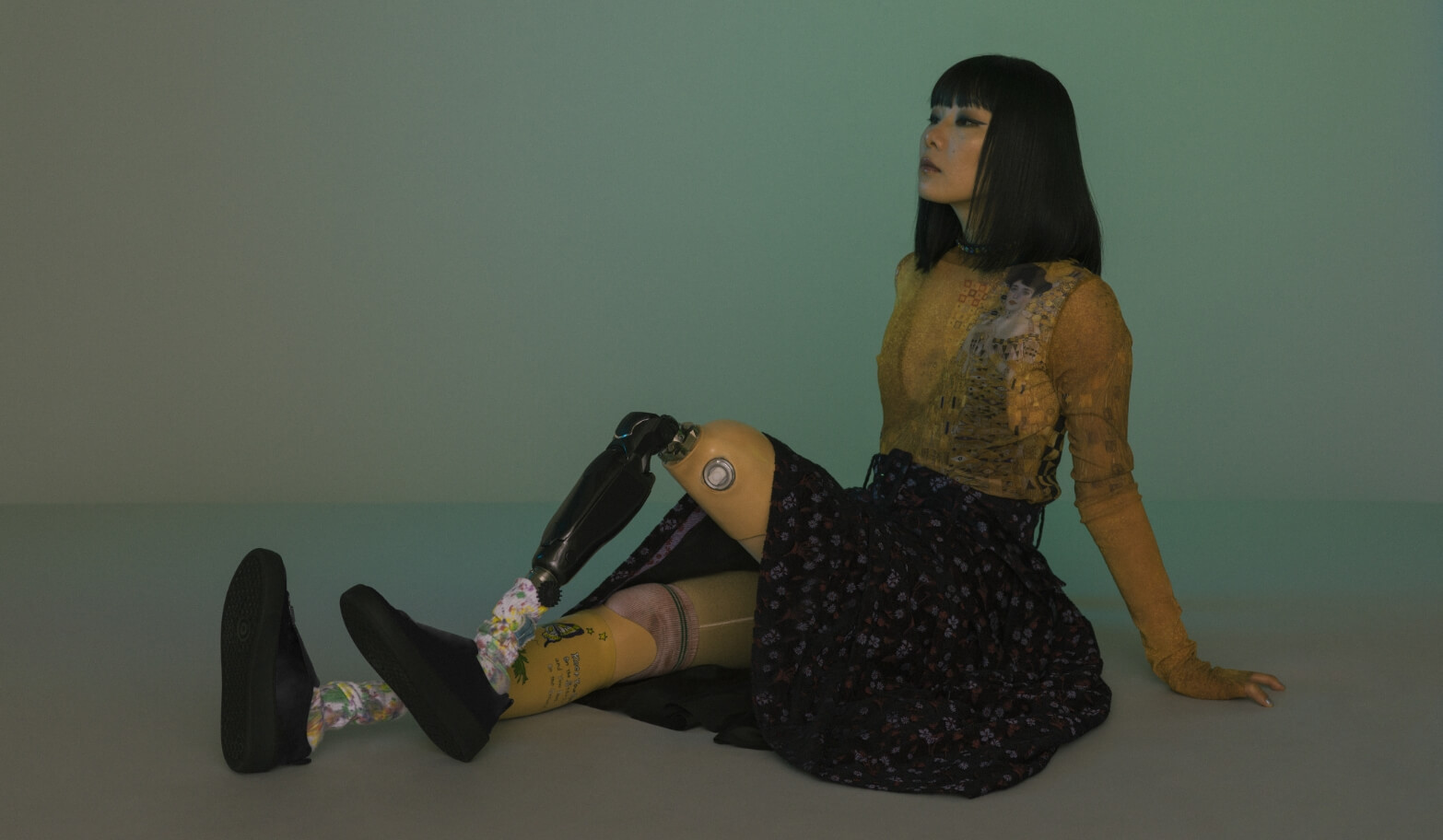
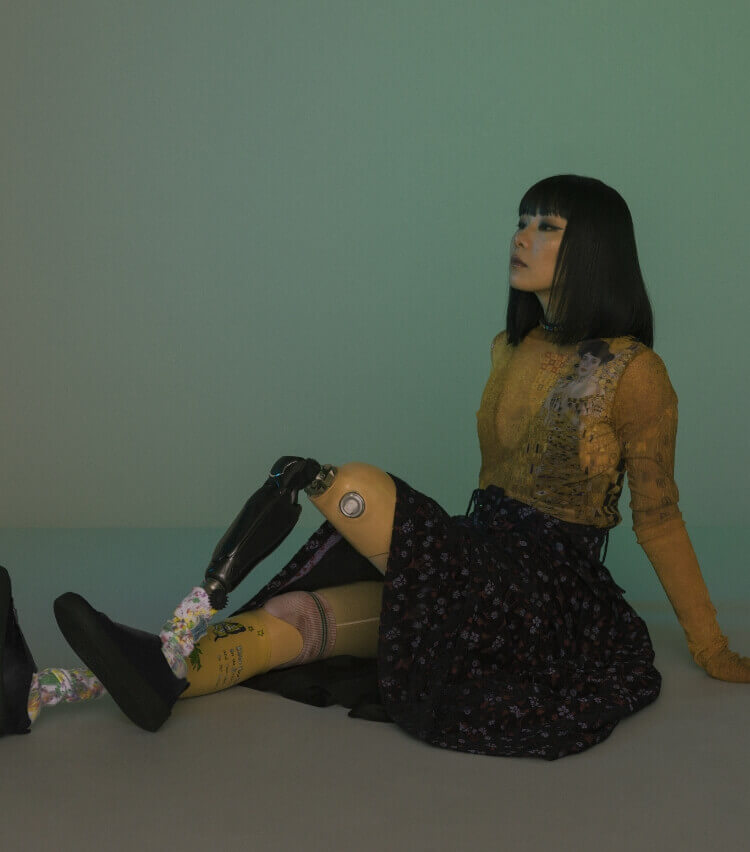


The Life of
Mari Katayama
From her first encounter with prosthetics, to her encounters with art, education, marriage, motherhood, to her highs and lows as an artist, and the restart of the HIGH HEEL PROJECT — Mari Katayama shares her life journey and reflections on what she has experienced in life and the decisions she has made at key crossroads.
PROFILE
Mari Katayama
Born in 1987 in Saitama Prefecture and raised in Gunma Prefecture, Japan, Katayama graduated from Tokyo University of the Arts in 2012 with a master’s degree in Intermedia Art. She works in a variety of media, including hand-sewn objects, paintings, and collages depicting her body, as well as self-portraiture involving the finely crafted staging of the pieces she creates. In addition to her work as an artist, she is also a singer, model, lecturer, and writer.
-
2022
Solo exhibition “MARI KATAYAMA”
(Kaunas Photography Gallery, Kaunas, Lithuania) -
2021
Solo exhibition “home again”
(Maison Européenne de la Photographie Studio, Paris, France) -
2019
“The 58th Venice Biennale: May You Live In Interesting Times” (Venice, Italy)
Solo exhibition “Broken Heart” (White Rainbow, London, UK) -
2017
“Photographs of Innocence and of Experience: Contemporary Japanese
Photography vol.14” (Tokyo Photographic Art Museum, Tokyo, Japan)
Solo exhibition “on the way home” (The Museum of Modern Art, Gunma, Japan) -
2016
“Roppongi Crossing 2016: My Body, Your Voice” (Mori Art Museum, Tokyo, Japan)
-
2013
“Aichi Triennale 2013” (Nagoya, Aichi, Japan)
Major Exhibitions
-
Major Publications
GIFT, 2019, United Vagabond
-
Major Awards
2020 The 45th Kimura Ihei Award
2019 The New Photographer Award, 35th Higashikawa Awards -
Major Collections
Tate Modern (London, UK) / Mori Art Museum (Tokyo, Japan) / Tokyo Photographic Art Museum (Tokyo, Japan) / La Fondation Antoine de Galbert (Paris, France)
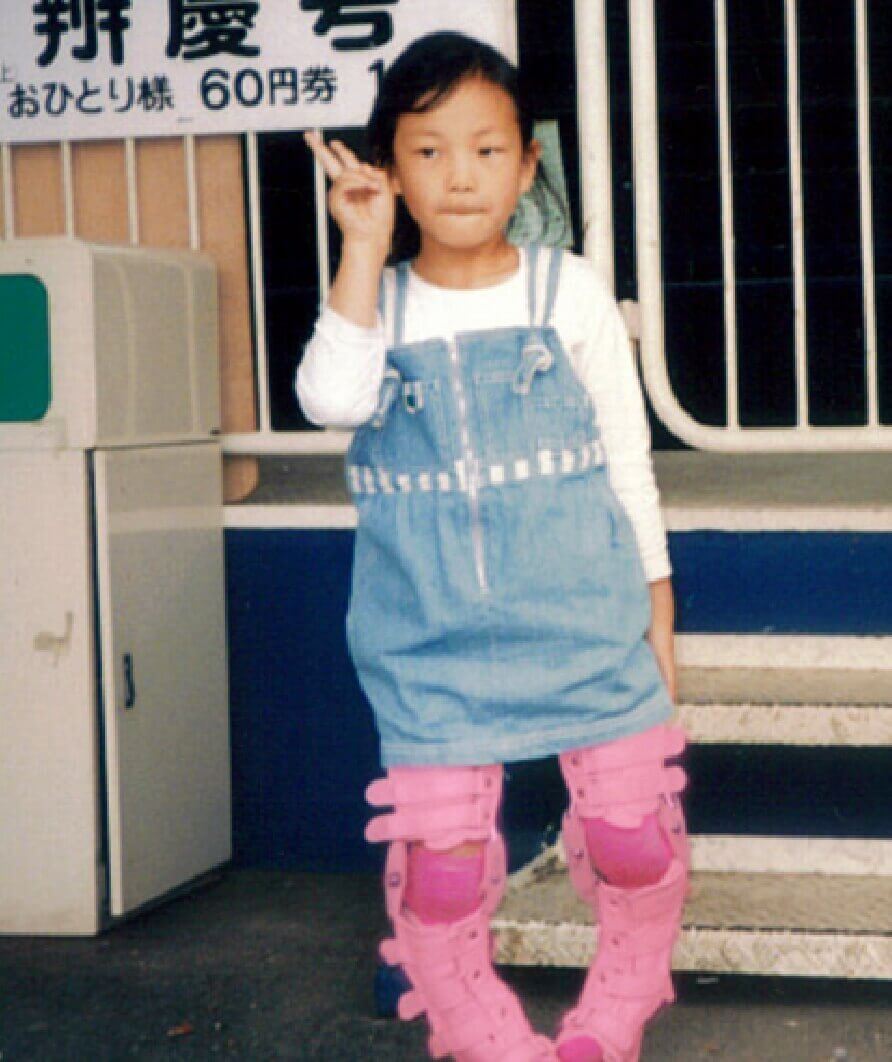
It was Katayama herself who said, “I want a prosthetic leg,” when she was a child. I want to wear shoes like everybody else and play like everybody else. Her desire to be like everybody else, to close the gap between herself and others, all of this was stronger than her fear of the surgery. However, even with prosthetic legs, her struggles weren’t over. As her young, growing body continued to change rapidly, the prosthetic legs that once fit her would soon cause pain. She commuted regularly from Gunma to her prosthetist in Tokyo for adjustments. She met a prosthetist with excellent skills and was able to do more with her prosthetic legs, but she still felt she couldn’t attain her goal of being the same as everybody else. And the way that people looked at her didn’t change. I hate prosthetics! These were the most personal tools in her life, and yet she didn’t trust them or feel any attachment to them. Instead what she felt was aversion. The young Katayama turned inward and immersed herself in the creative activities that she loved.
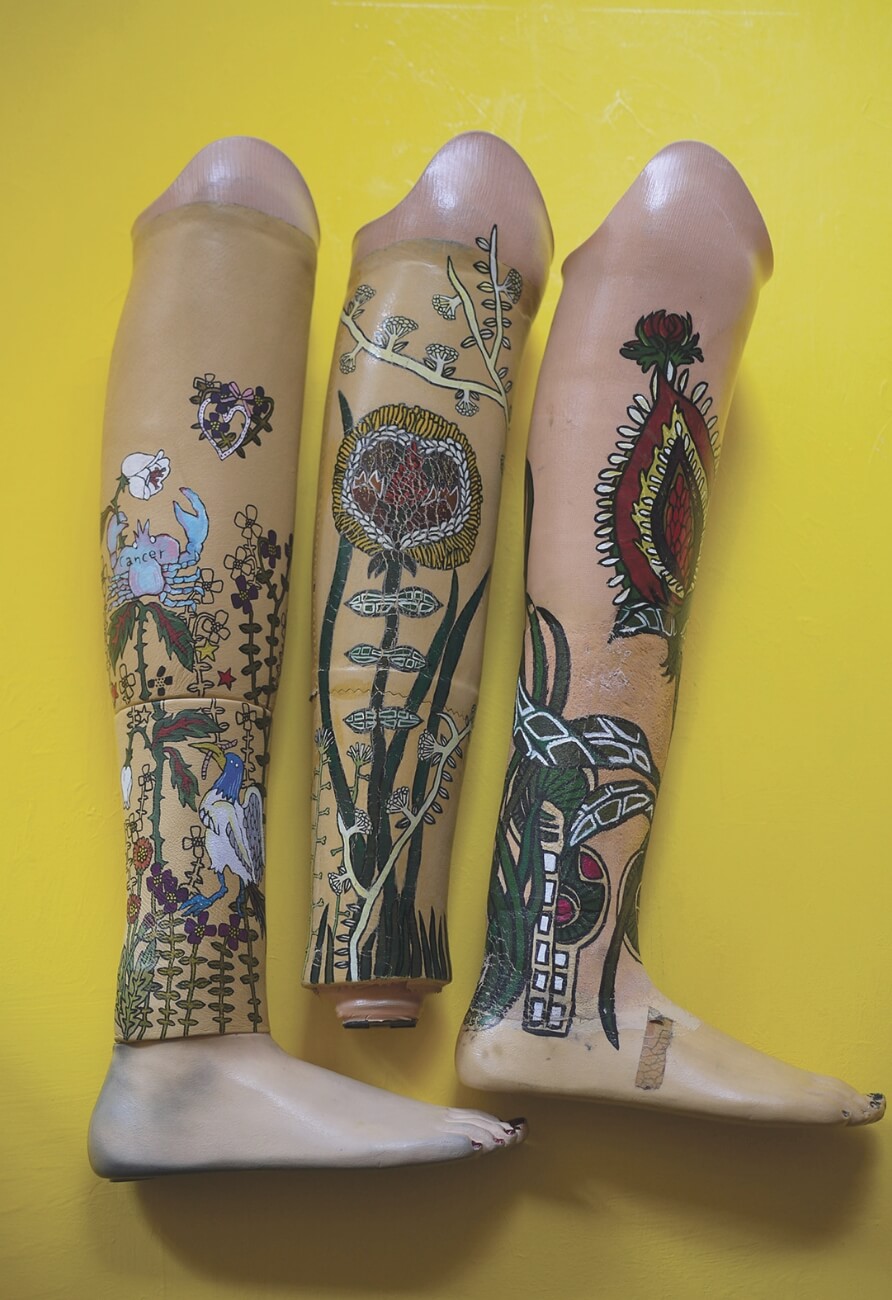
Once she was in high school, Katayama met many artists on social media, and though still
a student, she expanded the scope of her creative activities. It was around this time
that she started drawing on her prosthetic legs. Conveying her desire to “keep her feet
on the ground,” she drew tattoo-like pictures of plants rooted in the earth. She
describes it as an expression of physicality as she recalls her feelings at the time,
saying, “I think I wanted to love my prosthetic legs.” Though they constantly caused her
pain, they were also the closest tools she had and she needed them to walk. I would need
them for the rest of my life. If only I could love them, even a little… These
were the
thoughts that prompted her to draw.
And then, one of Katayama’s pieces caught people’s attention, winning the Encouragement
Prize at the Gunma Biennale for Young Artists. She took an entrance exam and was
accepted at Gunma Prefectural Women’s University, where she studied in the Department of
Aesthetics and Art History, Faculty of Literature.
Closed Doors,
Open Doors
During her time at university, Katayama spent all of her time devouring art books, pursuing her studies, working hard on her art, and having a lot of fun. “Nothing was wasted,” Katayama says, fondly recalling life at school. For four years, she studied and created art, but what she was seeking in her life was stability. She tried several different career paths in Tokyo, but most of them were closed to her simply because she had a disability. Just as she was considering taking a job at a local organization that employed people with disabilities, she got a call from her mother. Her grandfather was in the hospital and did not have much time left. Wanting to find a way to give some cheer to him, a suibokuga ink painter himself and a supporter of Katayama’s creative pursuits, she blurted out, “Grandpa, I’m going to the top art school in Japan!” True to her word, she applied for the graduate program at Tokyo University of the Arts. And though her grandfather passed away shortly after the second round of entrance exams, she passed with flying colors, a parting gift for his final journey.
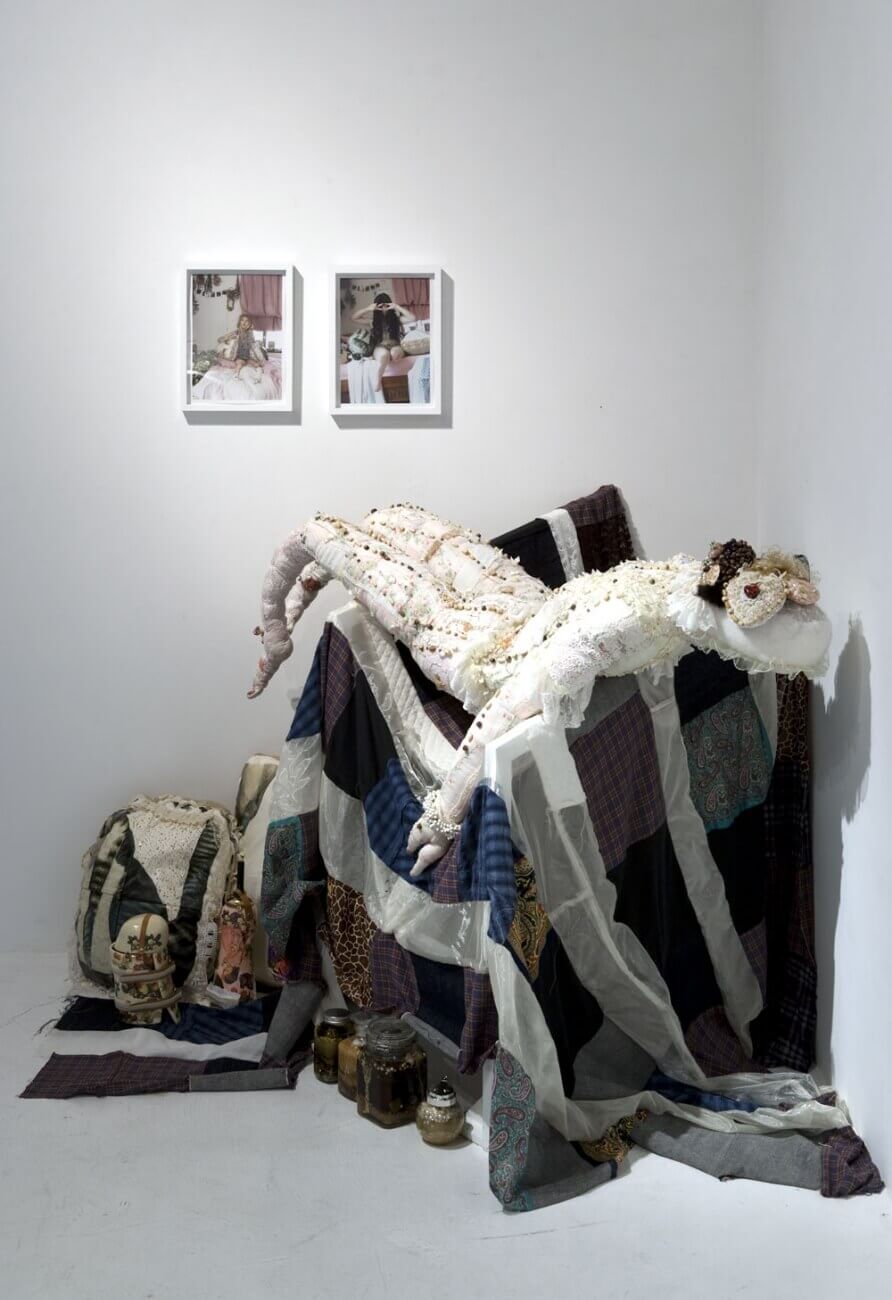
”identity, body it. -curated by
Takashi Azumaya- Installation
view at nca | nichido contemporary art,
2010
Seeing Herself as an Artist
Seeing Herself as an Artist
In grad school, Katayama participated in an exhibition and sold her first piece. “It
was when I was talking to the person who bought my art that I realized I have a
responsibility to the people who spend money on my work to call myself an artist.”
It was at that moment that she became aware herself as an artist, and her path in
life began to take shape.
Around this time, Katayama began singing in jazz bars to earn her tuition and living
expenses. She speaks of the joy of earning money by doing what she loved and earning
it through her own efforts. But then one night, something happened.
”identity, body it. -curated by Takashi Azumaya- Installation view at nca | nichido contemporary art, 2010
While Katayama was singing on stage, a drunken customer poured a drink on her, yelling, “A woman who doesn’t wear heels is no woman!” Her prosthetics were hidden under her long dress, but still she was shaken. Holding back her feelings, she apologized and left the stage. Biting back tears, she waited for dawn and took the first train to Tazawa Mfg. Co., the prosthetists and orthotists she had been consulting for many years. “I want to wear high heels!” she cried out as soon as she arrived. To fulfill her request, they imported foot parts designed specifically for high heels, and she somehow managed to walk in heels. But she quickly discovered that any high heels available on the market would be in tatters within an hour. Why isn’t it possible to wear heels with prosthetic legs? Katayama made the rounds of experts seeking a scientific answer to this question.
While searching for answers, she met and talked with people in the same situation, facing the same struggle and feeling that they weren’t free to enjoy fashion. Going out in clothes that you like, clothes that are comfortable, clothes that you choose to wear — it’s a way to connect with society. Is fashion a luxury item? Are people with disabilities not allowed to enjoy it? Her feelings were growing even stronger. “As I talked with people facing similar struggles, I felt that I might be able to help making everyone’s life easier by wearing high heels myself.” So Katayama started walking down the street in high heels, singing on stage in high heels. And this was the beginning of the HIGH HEEL PROJECT.
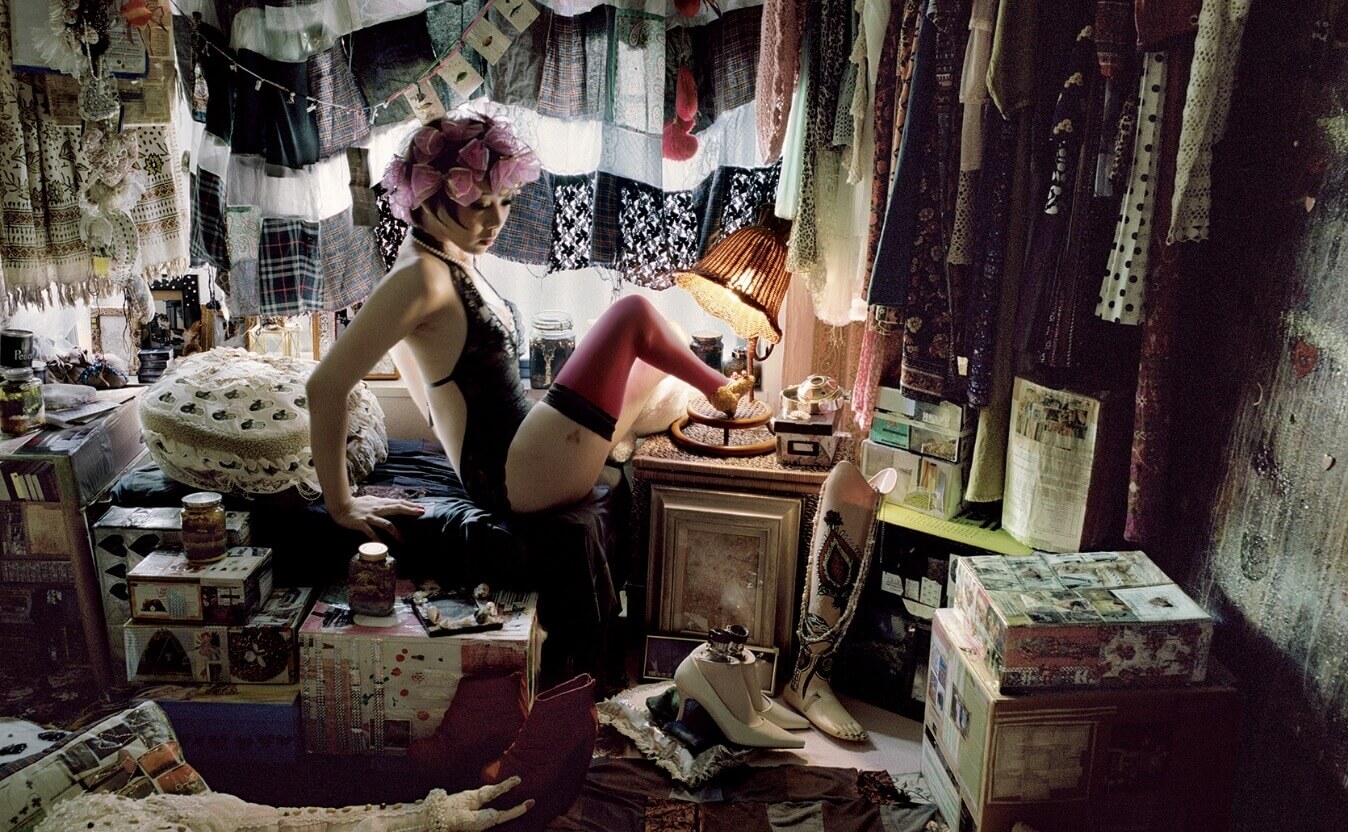
I’m wearing little high heels, 2011 ©Mari Katayama
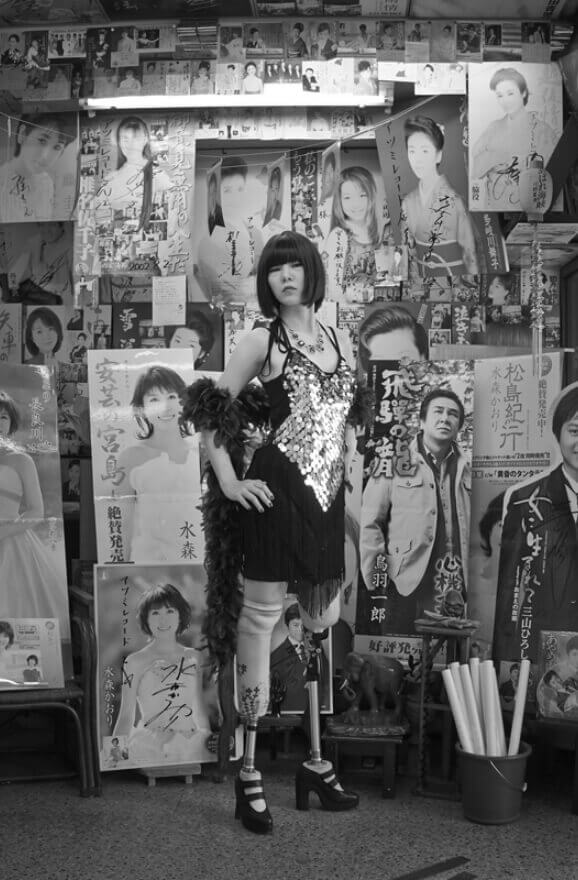
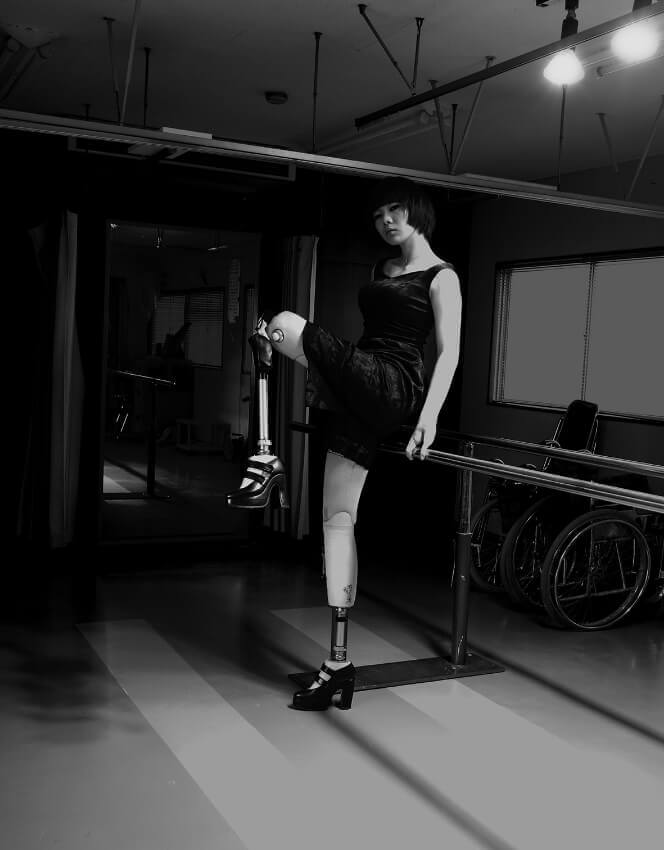
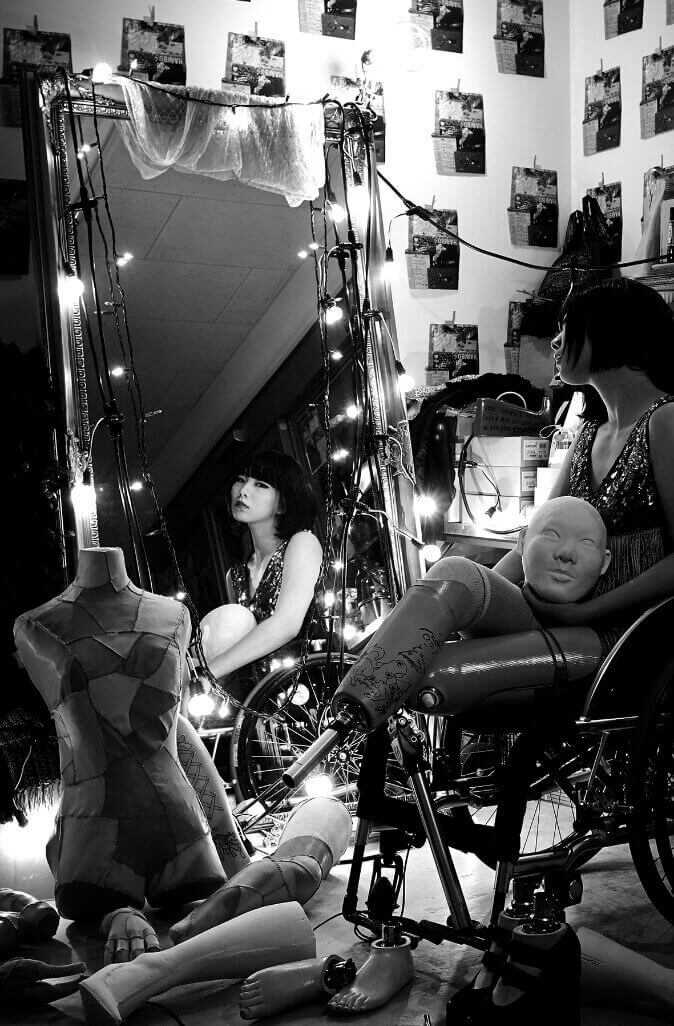
[L to R]
25 days in tatsumachi studio / Atsumi
Records #002, 2015
©Mari Katayama
high heels, 2012 ©Mari Katayama
30 days in tatsumachi studio, 2015
©Mari Katayama
Raising a Child,
Creating Art,
and
Battling
Loneliness
As she continued her career as an artist, Katayama got married and had a child. People were skeptical about her giving birth. She realized, “No one is going to help me. I’m on my own with this, just me and my family.” As these thoughts grew stronger, Katayama became lonelier and lonelier.
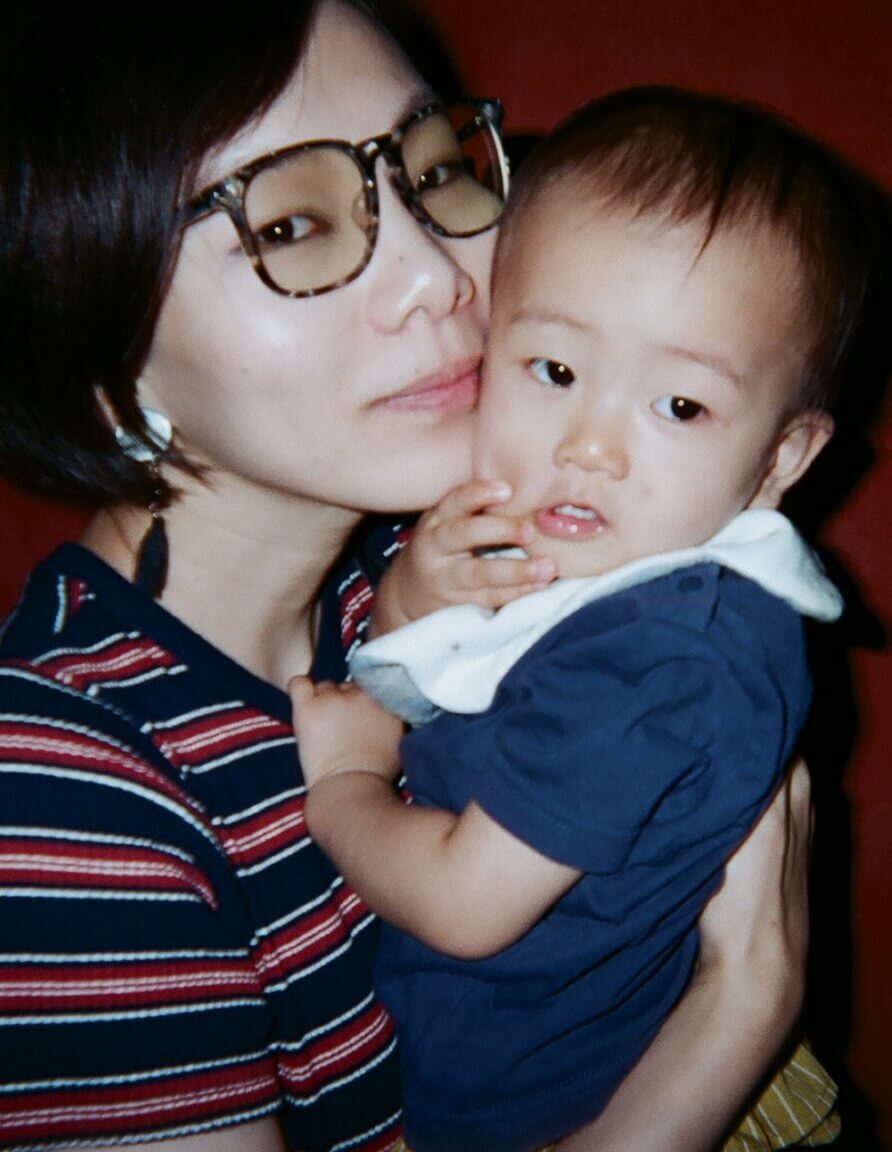
One day, while carrying her daughter, her knee buckled and she fell. Although she protected her baby during the fall and neither of them were hurt, after this incident she became too afraid to carry her child while walking. During the day, she took care of her baby on her own, but being in prosthetics made things more difficult than she had anticipated. She faced heartbreak more than just a few times. Despite all the struggles, Katayama continued to work on her art. She entered a piece entitled May You Live in Interesting Times in the 58th Venice Biennale international art exhibition. Her work in the Venice exhibit and her photography book GIFT received high acclaim, and she was awarded the 45th Kimura Ihei Award. She had become a full-fledged artist recognized around the world and the center of a great deal of attention.
Partnership for
a
Big Step Forward
In January 2022, Katayama set out to restart her HIGH HEEL PROJECT. At the same time, she was on the hunt for a new prosthetic leg that would expand the possibilities for her activities. What she came across was the ALLUX 2, a microprocessor-controlled prosthetic knee joint. The encounter with ALLUX 2 and Nabtesco brought significant changes to her life and her artistic activities. She was finally freed from the fear of knee buckle. Walking became enjoyable, and she even came to call the prosthetics that she had hated so much, her “partner.” And Nabtesco, too, completely on board with the concept of her HIGH HEEL PROJECT and the purpose behind it, signed on as a sponsor in September 2022. The Mari Katayama and Nabtesco collaboration — a big step toward “freedom of choice” and “freedom to pursue ideals.”
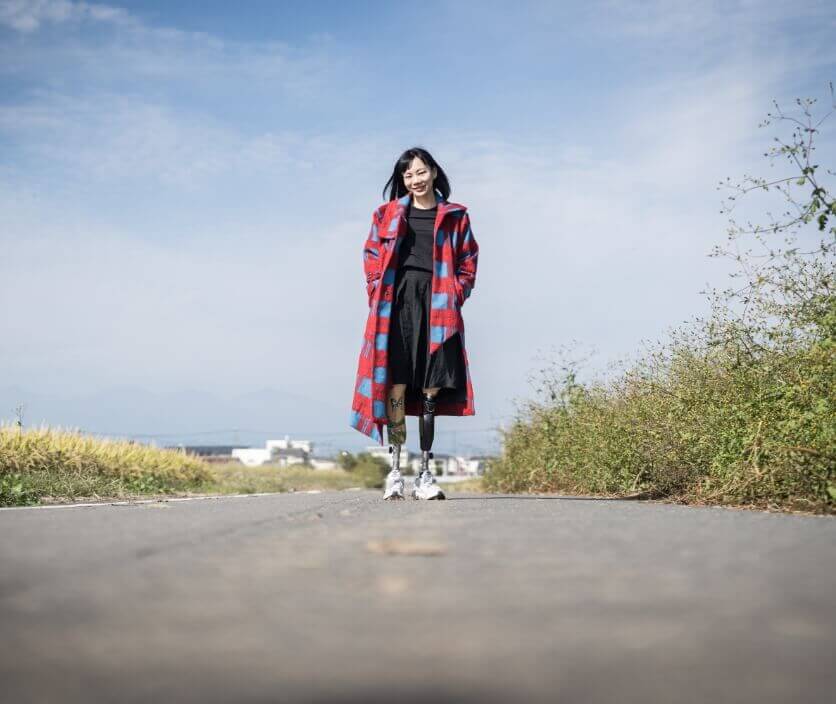
STORIES


